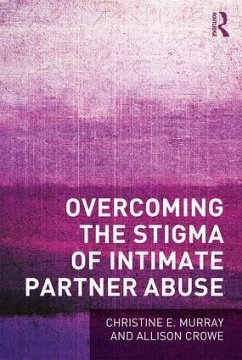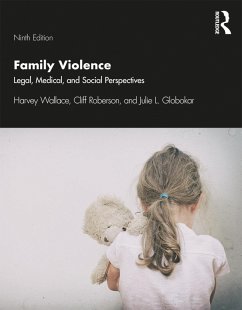Nicht lieferbar

Family and Intimate Partner Violence
Heavy Hands
Versandkostenfrei!
Nicht lieferbar
For courses in domestic violence, family violence, and victimology.The authoritative introduction to family violenceFamily and Intimate Partner Violence: Heavy Hands is an authentic introduction to the crimes of family violence, covering offenders and offenses, impact on victims, and responses of the criminal justice system. Comprehensive yet easy to understand, this established text is essential reading for students considering careers in criminal justice, victim advocacy, social work, or counseling. Gosselin draws on extensive field experience and real¿ examples to explain abuse and its eff...
For courses in domestic violence, family violence, and victimology.
The authoritative introduction to family violence
Family and Intimate Partner Violence: Heavy Hands is an authentic introduction to the crimes of family violence, covering offenders and offenses, impact on victims, and responses of the criminal justice system. Comprehensive yet easy to understand, this established text is essential reading for students considering careers in criminal justice, victim advocacy, social work, or counseling. Gosselin draws on extensive field experience and real¿ examples to explain abuse and its effects on survivors. The 6th edition includes a new chapter on adolescent and young adult victimization, as well as updates to topics of interest such as intimate partner violence, asylum law, and theoretical perspectives.
The authoritative introduction to family violence
Family and Intimate Partner Violence: Heavy Hands is an authentic introduction to the crimes of family violence, covering offenders and offenses, impact on victims, and responses of the criminal justice system. Comprehensive yet easy to understand, this established text is essential reading for students considering careers in criminal justice, victim advocacy, social work, or counseling. Gosselin draws on extensive field experience and real¿ examples to explain abuse and its effects on survivors. The 6th edition includes a new chapter on adolescent and young adult victimization, as well as updates to topics of interest such as intimate partner violence, asylum law, and theoretical perspectives.













